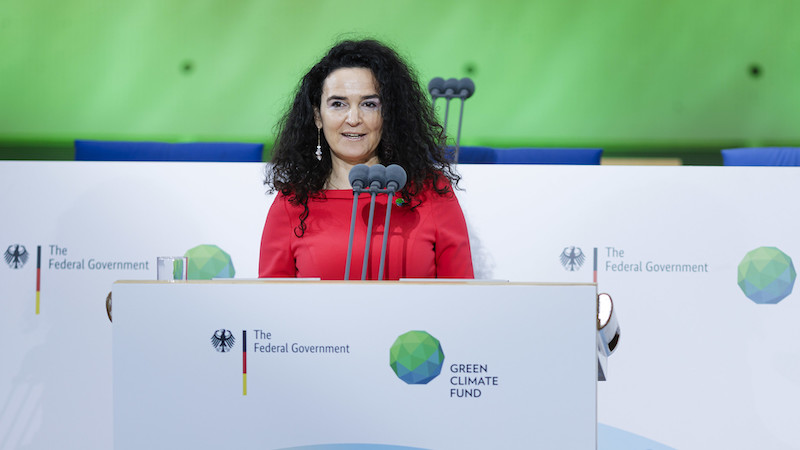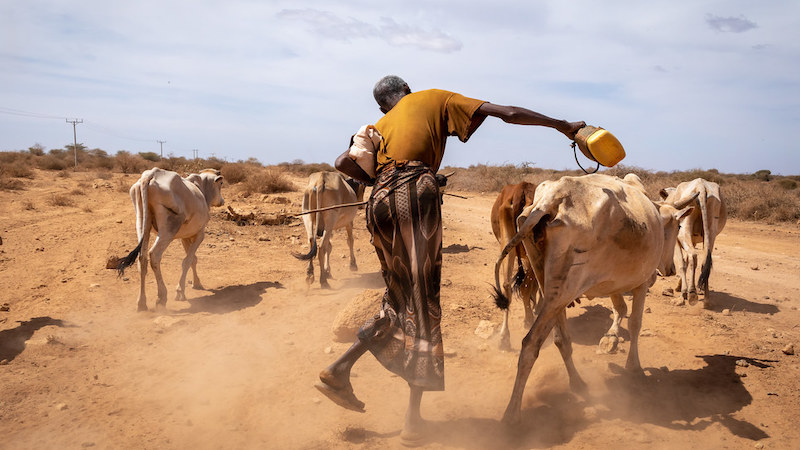GCF head Mafalda Duarte promises a more proactive plan to bring cash to the most vulnerable countries struggling with climate impacts
One of the world’s most vulnerable countries, Somalia is bearing the brunt of climate extremes.
A two-year drought – its worst in decades – was followed last November by devastating floods. The double crisis is estimated to have killed tens of thousands of people, displaced millions more, destroyed livelihoods, and exacerbated severe hunger and water scarcity.
For the East African nation, this was not just a one-off, freak event. Cycles of drought and flooding are becoming more frequent, intense and unpredictable as civilians also come under attack by militants waging an ongoing civil war.
Channeling donor cash to help fragile countries cope with the growing impacts of climate change should be the core mission of the Green Climate Fund (GCF). But, since its creation nearly 14 years ago, barely a single dollar from the UN’s flagship fund has reached Somalia.
Its new head wants to change that. Mafalda Duarte marked her first semester as the fund’s executive director with a visit to Somalia where she promised a different approach to get more money to the world’s poorest.
“We have to be deliberate, be more proactive,” she told Climate Home in an exclusive interview. “We cannot operate like in other countries where we might just sit and wait for them to bring proposals to us. Because of low capacity [in vulnerable countries], we have to work hand in hand with government to put forward a plan.”
Current mandate “not enough”
The Green Climate Fund, which has received pledges of $12.8 billion for the next four years, finances 253 projects in 129 developing countries. It has a mandate to split its resources equally between emissions-cutting and adaptation activities – and to allocate at least half of the latter to the most vulnerable countries.
But Duarte told Climate Home that “those parameters are not enough” anymore. “Even though we are compliant, it is still not enough to get this to support countries like Somalia,” she said.
A Somali herder tries to keep his cows alive amid a devastating drought. Photo: UNICEF Ethiopia/2022/Mulugeta Ayene
Having listened to the priorities of ministers, business leaders and civil society in Mogadishu, the Green Climate Fund is now preparing to invest more than $100 million in Somalia over the next 12 months.
A first project – already in the pipeline before this month’s visit – should give isolated communities access to off-grid solar energy, as part of a broader pan-African effort covering 70 million people. Funding proposals to boost the climate resilience of Somalia’s agricultural sector and improve food security could be put in front of the fund’s board for approval as early as July.
Building resilience
The Portuguese executive director, who took the fund’s helm last August, said this new targeted approach would not be limited to Somalia. “You will see us do more,” she said. “We will look at the list of the most vulnerable countries, where we are doing almost nothing at the moment, and we will endeavour to do something similar.”
Welcoming the direction charted by Duarte, Liane Schalatek, associate director of the Heinrich Böll Foundation, said “pushing” the fund’s biggest partners, like the World Bank and UN agencies, to use its money for more work in vulnerable countries will be key to its success.
“A country like Somalia will depend on international access entities that often want to do the easier rather than the harder stuff, so it’s important to overcome their reluctance,” added the experienced GCF watcher.
UN climate fund axes Nicaragua forest project over human rights concerns
Duarte believes that UN agencies and multilateral development banks need to coordinate their efforts to limit the damage from future climate disasters. “We cannot keep being reactive and provide humanitarian assistance when the next mega-drought or flood hits,” she said. “We have to work collectively and build the resilience of the communities.”
The GCF’s head wants to shake up how the fund operates more widely. Setting out simpler rules and processes is the next item on her reform agenda, with the goal of moving away from “a one-size-fits-all approach”.
Poorer countries with less administrati
Read More


